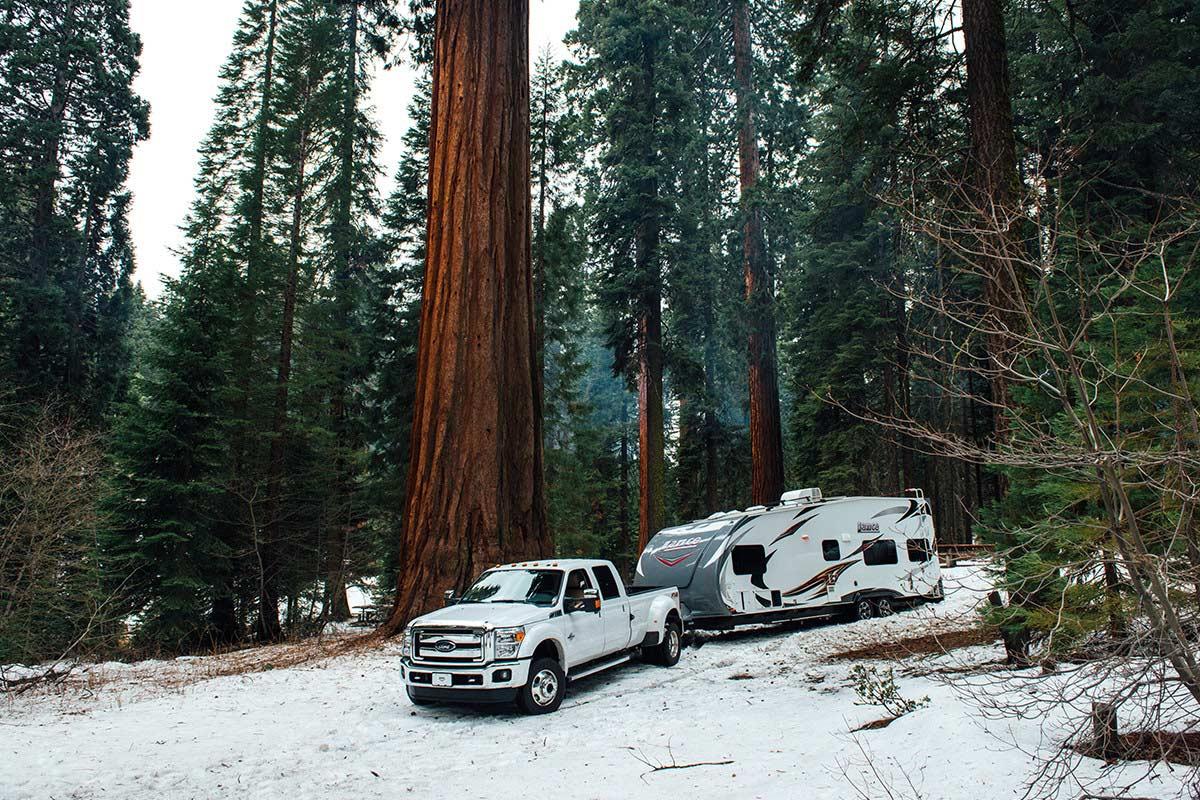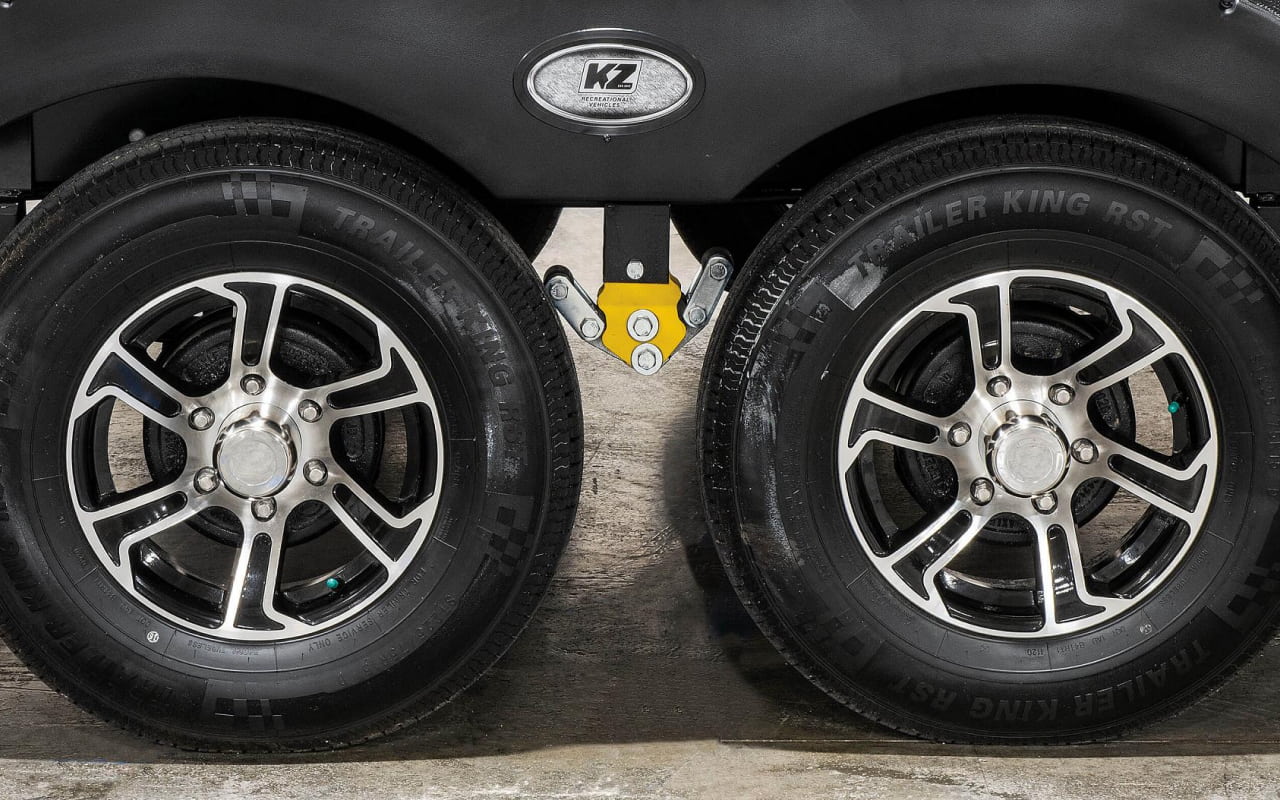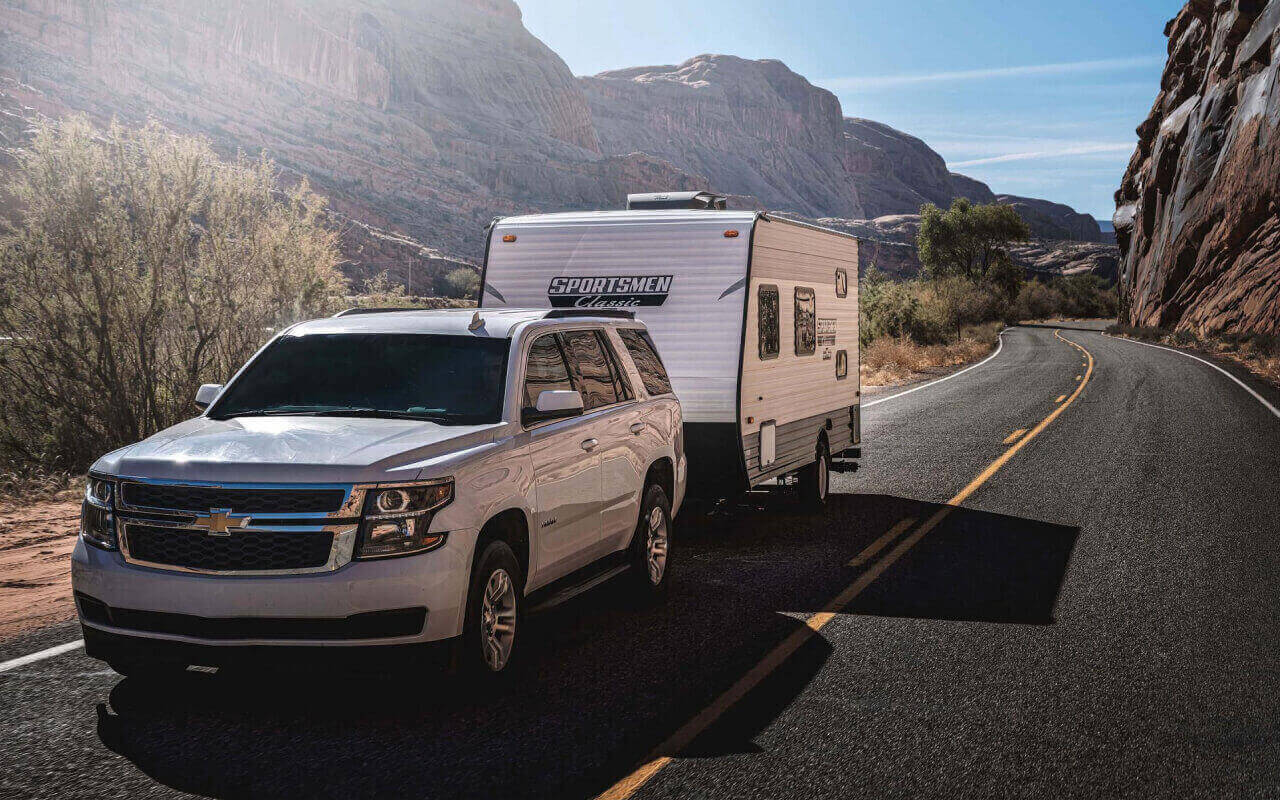
To do so safely and to ensure that your RV is in top shape for a season of adventure or stowing, you’ll need to winterize the right way. Discover what RV winterization entails and the differences between preparing your RV for storage vs. travel and more!
What Is RV Winterization?
RV winterization is the annual procedure all RVs must undergo to prepare for travel or storage in below-freezing temperatures. While an RV is a home on wheels, adding many of the features that make homes comfortable during the winter is not possible with RVs or motorhomes.
Given their size, space for things like insulation in the interior walls and piping is not available. Adding insulation increases an RV’s weight, making it more difficult to tow or drive. As a result, your RV will need to be prepared for winter weather so that it can be in the best shape possible for spring and summer travels.
The “right” time to winterize your RV varies depending on where you live and what your fall/winter travel plans look like. RV owners throughout most of the continental United States will need to winterize their RV. In the Upper Midwest and Northeast, temperatures begin to hit the freezing line in mid to late November. December is when most of the Midwest, Plains and East Coast will see freezing temperatures. RVers in parts of the Southwest and South may not see the thermometer dip below 32 during the day, but will need to be wary of nighttime temperatures.
Whether you’re winterizing your RV during October or November, the process is mostly the same. At the bare minimum, all RVers should have their RV plumbing and water systems winterized. This involves ensuring that the pipes, connectors, water lines and holding tanks do not freeze during the winter using antifreeze. As temperatures get below freezing, condensation and still-water freezes and expands, causing damage throughout your water system. This results in costly repairs that can delay your upcoming travel plans.
Preparing Your RV for Winter Storage vs. Travel
Where the winterization process differs for RVers is whether you are storing your RV for the winter or heading out on a trip. With winter storage, preparations are needed to maintain many of the RV’s crucial systems through a 3-4-month period of not being in use. Beyond the standard water system winterization, a few other pre-winter storage tasks include:
- Prepare the RV Storage Area: For owners with an RV garage, make sure to clean and prep it before storing your RV for the winter. Check the roof for damage or holes, and repair any you find. Mice and rats can get into your RV and cause all kinds of problems, so a few traps or well-placed repellents are always a great idea. Simpler RV garages like a carport can be built using store materials, and prefabricated steel garages are available to purchase. If you do not have a storage area with overhead coverage, an RV cover is the best way to keep your RV protected from the elements. Make sure to clear the overhead space of any tree branches or other objects that could fall on your RV.
- Watch Out for Mold: One of the negative consequences of prolonged storage is mold. Your RV’s refrigerator is the most susceptible source, followed by other high-moisture areas like the shower. Give these a thorough cleaning and make sure the areas are completely dry before storing your RV to ensure you’re ready to go for the spring.
- Run the Generator and Fill Up Your Fuel Tank: Besides the water system, an RV’s fuel tank can be quickly beset by ice. In an empty or partially-filled tank, small bits of condensation can build, freeze and cause cracks. For diesel motorhomes, add a fuel additive to prevent diesel fuel from freezing or gelling. While your RV is in storage, you should run the generator every month to make sure it is working properly. Leaving a generator inactive for an extended period can lead to several issues that can delay your first spring RV trip.
- Wash the Exterior: After a long season of travel, your RV’s exterior has seen wear from sunlight, dust, water and other elements. Before putting it away for the winter, clean the exterior of your RV with special attention paid to the roof and awning. During this process, make sure to inspect any seams and seals for damage.
When it comes to preparing for RV travel during the winter, RVers must prepare their RV against things like freezing pipes, but must also be prepared to sleep in it during the winter. Some preparations include:
- Apply Heat Tape to Your RV’s Pipes: Since you will need water to wash dishes, drink, and shower with, you will be unable to add antifreeze to your RV’s water system. Heat tape keeps pipes warm and prevents freezing during a winter RV trip.
- Check Your RV Batteries: The last thing you want on an RV trip during the winter is a dead battery (or two). Make sure to thoroughly inspect your RV batteries for damage, signs of corrosion and run a full test to check their charge.
- Install or Check Your Window Sealant: Your RV’s windows and windshield help keep frigid air out and warm air in. Double-check the seals on all windows throughout your RV to make sure there are no voids. If you notice signs of wear or damage, have them resealed before your next winter RV trip.
- Make Sure You Have Emergency Equipment: An emergency on the road or at your campsite can be problematic during a winter RV trip. Items like tire chains, extra warm clothing, sleeping bags, flares and a snow shovel are just a few items that can help you during a tough winter trip.
For a comprehensive guide to winter RV travel, check out the Lazydays RV winter travel prep guide.
At Lazydays RV, our basic winterization package is available for all types of RVs from any manufacturer and for an additional cost, our technicians can winterize your RV’s appliances. In the spring, our service centers offer de-winterization services. Our service experts have an average of 14-years experience in the RV industry and can diagnose any additional issues your RV may have.
For more information or to schedule an RV winterization appointment, contact us today!



